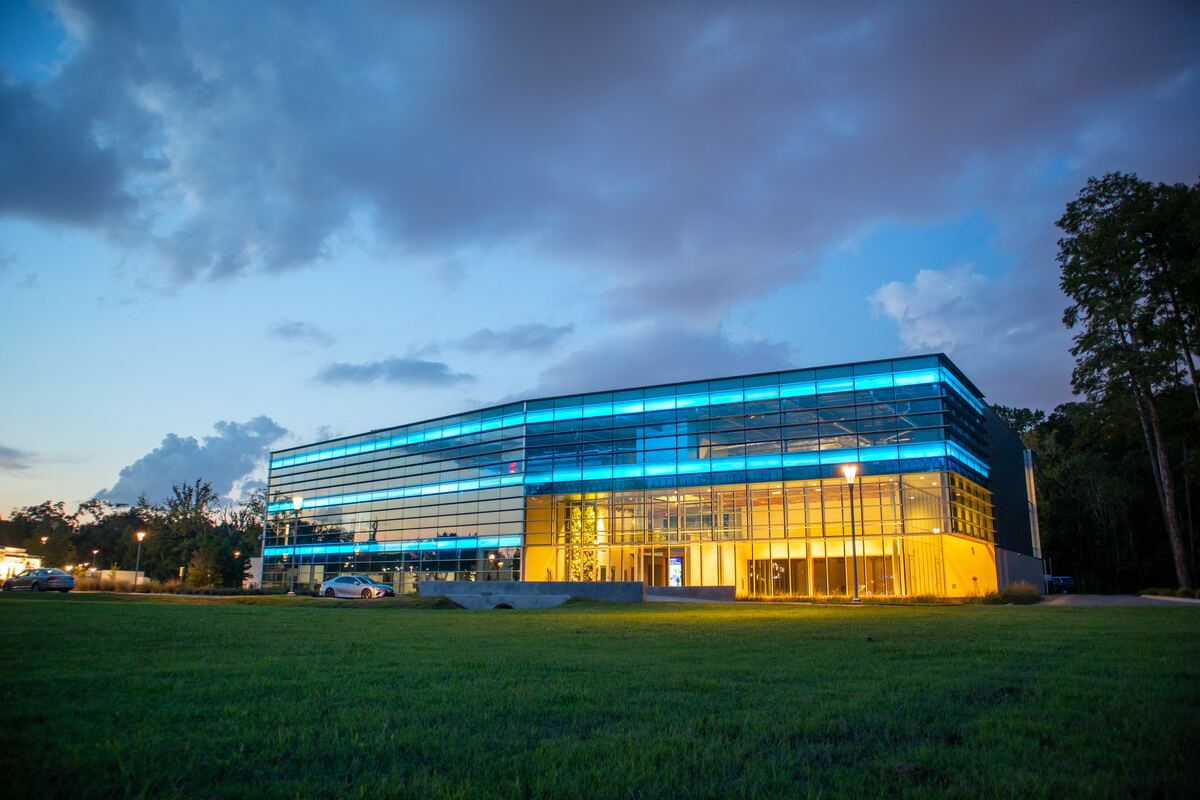Exclusive Neuroject Article: The plain walls all around us are undergoing a tremendous shift in the digital age, where connectivity impacts our daily lives. A new era of possibilities has begun with the introduction of 5G technology, and its effects are being felt far beyond our mobile gadgets. As we approach the year 2024, more than just our electronics are growing smarter; our buildings are also becoming self-aware beings.
The combination of 5G in building solutions has created the conditions for a revolution that will radically alter how we live in and interact with built environments. The function of 5G in buildings is a story that is still developing, from improving energy efficiency to enabling unprecedented levels of involvement through augmented reality.
Table of Contents
Introduction to 5G in Buildings
Technological developments have continuously changed how we engage with our surroundings in the modern digital environment. The introduction of 5G in building sloutions, which promises greater connectivity and communication capabilities, stands out among these breakthroughs as a transformational force. The integration of 5G into the construction of buildings has emerged as a fundamental phenomenon, altering the idea of intelligent infrastructure as we negotiate the intricate web of urbanization and digitalization.
The integration of 5G into our built environment will reach a critical turning point in 2024. The very structures that provide us with shelter are being given the ability to go beyond their traditional functions by 5G in buildings as cities transform into smart ecosystems. This manual offers insights into the changing world of technology-driven urbanism and serves as a thorough analysis of the symbiotic link between 5G and buildings.
With its impressive features of extremely fast data transfer and low latency, 5G in buildings paves the way for an era of unrivaled connectedness. As we continue reading this guide, we’ll learn how these capabilities go beyond simple convenience and affect the fundamental fabric of our living quarters. References to industry papers like Ericsson’s “5G for Business: A 2030 market compass” give concrete details about the anticipated growth trajectory of 5G in structures and urban settings.
We’ll see the concrete ways in which 5G in buildings fosters synergy between technology and architecture through a careful investigation of real-world applications, such as the deployment of IoT devices and the seamless integration of augmented reality (AR) and virtual reality (VR). Additionally, conversations based on academic writings like the study “5G-Enabled Smart Buildings: Architectures, Challenges, and Opportunities” provide a critical lens through which we may examine the difficult problems and creative solutions that characterize this revolutionary journey.
Suggested article’s for reading: Augmented Reality in Construction | Virtual Reality in Construction
Understanding 5G Technology
The fifth generation of wireless technology also referred to as 5G in buildings, has become a major force in the communications industry. The introduction of 5G is expected to change a number of industries, including telecommunications, healthcare, transportation, and more. 5G promises to deliver ultra-fast data speeds, minimal latency, and support for an exponentially greater number of connected devices. Examining 5G technology’s salient characteristics, underlying mechanics, and promise is crucial to understanding its essence.
Fundamentally speaking, 5G in buildings provides a huge improvement over 4G. The striking boost in data transfer speeds is 5G’s most noticeable characteristic. While peak speeds on 4G hover around 1 Gbps, the goal of 5G in buildings is to reach speeds of up to 20 Gbps. Using a mix of higher-frequency radio waves and sophisticated signal processing methods, this exponential improvement is made possible.
The utilization of several frequency bands, including the sub-6 GHz and millimeter-wave (mmWave) bands, is one of the key technical differences of 5G in buildings. The sub-6 GHz spectrum is appropriate for urban and suburban settings because it offers greater coverage and higher throughput around obstructions. The mmWave band, on the other hand, enables extremely fast data speeds but is constrained by a shorter transmission range and prone to obstruction by structures and other objects.
Another pillar of 5G is the reduction of latency. The time elapsed between making a request and getting a response is referred to as latency. Latencies on 4G networks hover around 30 milliseconds, whereas 5G in buildings plans to reduce them to only 1 millisecond. Applications like real-time remote surgery, driverless vehicles, and augmented reality experiences all depend on this almost instantaneous response time.
Network slicing is a technology that 5G in buildings uses to handle the expected increase in connected devices. Using this method, the network is divided into a number of virtual networks, each designed for a particular use case. For instance, a slice designed for Internet of Things (IoT) devices would differ from a slice created for ultra-high-speed data transport in terms of its properties.
The way we connect, communicate, and engage with the world around us is about to change thanks to 5G technology. With its unrivaled data rates, low latency, and support for many linked devices, it has the potential to bring about ideas that are currently unthinkable. We are entering a new era of connectivity as 5G in buildings continues to spread around the globe and has an increasing impact on enterprises and communities.
Suggested article for reading: IoT in Construction

5G and Smart Buildings
The way we engage with the built environment is changing as a result of the confluence of 5G technology and smart buildings. The incorporation of 5G in building networks within buildings is opening up new opportunities for improved connectivity, energy efficiency, and tenant experiences as we progress toward a more connected society.
Enhanced Connectivity: The ability to deliver seamless and high-speed connectivity throughout the facility is one of 5G’s key contributions to smart buildings. 5G in buildings delivers much faster data transmission rates and less latency than its forerunners. This translates to better Internet of Things (IoT) device connectivity, enabling in-building real-time communication between numerous smart devices and systems. As an illustration, the instantaneous data transmission capabilities of sensors enable quick decision-making in domains like security, climate control, and maintenance.
IoT Advancements: In smart buildings, widespread IoT device adoption strongly depends on reliable network connectivity. Smart sensors, actuators, and other devices that collect and relay useful data are proliferating because of 5G’s ability to support a huge number of connected devices without affecting performance. This information forms the basis for improving building operations and user experiences. Buildings are becoming more responsive and adaptive thanks to the integration of 5G and IoT, which can do everything from altering temperature and lighting based on occupancy to anticipating maintenance needs.
Augmented Reality (AR) and Virtual Reality (VR): When it comes to supporting immersive technologies like AR and VR in smart buildings, 5G’s low latency and high bandwidth are essential. In order to help customers make design decisions, architects and designers are making use of these technologies to provide virtual tours of planned venues. AR within the building itself can offer on-demand environmental information or direct people to their destinations. These programs improve the building’s look and feel while also improving navigation and design.
The way that buildings are planned, run, and experienced is being revolutionized by the incorporation of 5G technology into smart buildings. Buildings will soon be more responsive, effective, and user-centric than ever before thanks to 5G’s improved connectivity, IoT device empowerment, and seamless integration of immersive technologies. The future of urban infrastructure is clearly being shaped by this symbiotic link between 5G and smart buildings.
Enhancing Connectivity Inside Buildings
It is now essential to have constant connectivity in the modern digital age, both inside and outside of structures. It becomes clear as we examine 5G technology’s use in buildings that it will have a significant and far-reaching effect on improving connection. By advancing communication and convenience, the use of 5G in buildings is redefining how we interact with our surroundings.
The existence of dead zones, or regions where wireless signals have trouble penetrating because of complicated architectural designs or structural materials, is one of the main problems encountered in traditional building environments. These dead zones impede data transport and communication, which causes annoyance and inefficiency. But 5G in buildings is altering this environment by providing better coverage and less signal interference. 5G signals can negotiate barriers more successfully by using higher frequency bands and cutting-edge beamforming techniques, reducing dead zones and guaranteeing constant connectivity across buildings.
The effects of improved connection inside buildings are substantial in many different industries. Smart devices are already commonplace in our homes and workplaces as the Internet of Things (IoT) has gained traction. The seamless operation of various gadgets, from connected security systems that offer real-time surveillance to smart thermostats that optimize energy use, is made possible by 5G’s strong connectivity. Additionally, it becomes more practical to incorporate augmented reality (AR) and virtual reality (VR) activities inside structures, enabling immersive instruction, design visualization, and interactive entertainment.
Applications of improved connection in the real world are already taking shape. Healthcare organizations are implementing telemedicine services that permit remote consultations and diagnostics inside hospital complexes using 5G in buildings. 5G-enabled personalized shopping experiences are being used in retail settings to provide customers with individualized product suggestions and interactive information. The use of enhanced collaborative technologies is also advantageous in office settings because of 5G’s support for real-time data sharing and communication, especially among teams that are spread out geographically.
But it’s crucial to handle any potential issues. While 5G in buildings quicker and more effective connectivity has many benefits, it could also pose security and privacy risks. The risk of illegal access and data breaches grows as more gadgets inside buildings connect to the 5G network. As a result, to secure sensitive information, strong security measures and encryption techniques are required.
It is revolutionary how 5G technology will improve connectivity inside buildings. 5G in buildings is changing how people perceive and interact in indoor environments by removing connectivity obstacles and enabling the seamless functioning of IoT devices and interactive technology. In the future, it will be necessary to strike a balance between utilizing the advantages of improved connectivity and addressing security issues if we are to fully utilize 5G in building contexts.

5G and Building Design
The incorporation of 5G in buildings has opened up new options for building design and transformed how architects and designers approach the construction of contemporary buildings. Building design increasingly includes the seamless integration of cutting-edge communication systems like 5G in addition to aesthetics and utility. The impact of 5G on connectivity, building design, and the direction of architectural innovation are all explored in this section.
Seamless Connectivity: One of the key developments brought about by 5G in buildings is its capacity to deliver constant and quick connectivity throughout a structure. With the advent of uninterrupted network connections, designers are now able to develop settings that support the use of IoT devices, virtual reality programs, and other technologies.
Distributed Antenna Systems (DAS): Distributed antenna system installation is now taken into account during building design. DAS makes ensuring that 5G signals may successfully pass through ceilings, floors, and other obstructions, preserving connectivity throughout the entire building.
Small Cell Integration: One of the most important aspects of 5G in building design is the deployment of tiny cells, which are portable and low-power base stations. These cells improve capacity and signal strength, guaranteeing users a constant 5G experience even in heavily crowded locations.
Architectural Layouts: Building physical layouts are impacted by 5G in buildings, necessitating well-placed network infrastructure. To create areas that allow for the installation of antennae, transmitters, and other 5G-related equipment, architects must work with technological specialists.
Adaptive Materials: Building materials are crucial in 5G-focused designs because of the emphasis on effective signal propagation. Architectural planning is increasingly incorporating new materials that allow signals to travel through more readily without deteriorating.
Flexibility and Future-Proofing: Building designers must account for the rapidly changing nature of technology and create buildings that are flexible enough to accommodate new developments. Buildings may easily incorporate new 5G in buildings features and technologies, ensuring that they stay cutting-edge over time.
Challenges and Solutions
In order to successfully adopt 5G technology, stakeholders must take into account both the difficulties and solutions that have been provided as the technology continues to develop. To fully utilize the potential of 5G in building contexts, creative solutions are needed to address these technological, logistical, and security issues.
Challenges:
Signal Propagation and Penetration: The shorter wavelengths of the high-frequency bands utilized in 5G in buildings make it difficult for signals to pass through barriers like buildings and structures. This may lead to weakened signal and connectivity problems inside buildings.
Interference: A building’s abundance of gadgets, particularly in highly inhabited places, can cause signal interference and jeopardize the dependability of 5G connections.
Infrastructure Deployment: To provide excellent coverage and reduce disturbances during installation, the construction of 5G infrastructure, including small cells and distributed antenna systems, requires meticulous planning.
Energy Consumption: For buildings aiming for energy efficiency, the increased data processing and transfer requirements of 5G in buildings could result in higher energy use.
Privacy Concerns: Due to the possibility of unauthorized access to or misuse of the data created within a building’s 5G ecosystem, the rise of connected devices creates privacy concerns.
Solutions:
Small Cell Deployment: By installing tiny cells inside of buildings, the 5G network may more effectively reach locations with poor signals and handle signal propagation issues.
Beamforming Technology: A 5G method called beamforming directs signals at users, boosting signal strength and minimizing interference inside buildings.
Hybrid Network Architectures: In places where 5G in buildings coverage might be constrained, combining current Wi-Fi networks with 5G can provide seamless communication.
Advanced Building Materials: The problems of signal propagation can be reduced by using building materials that allow for higher signal penetration, ensuring that 5G connectivity penetrates deeper into structures.
Network Slicing: A 5G technology called network slicing makes it possible to build numerous virtual networks on top of a single physical infrastructure. Building managers can more effectively distribute network resources to various applications and services thanks to this.
Energy-Efficient Hardware: The increasing energy consumption brought on by 5G in buildings can be reduced via the creation of energy-efficient hardware and components, in line with sustainability objectives.
Encryption and Data Security: The data transported inside a 5G-enabled building can be protected by putting in place strong encryption and security mechanisms, addressing privacy issues, and defending sensitive data.
Regulation and Standards: Standards that direct the deployment of 5G in buildings are crucially established by regulatory agencies and industry organizations, ensuring reliable and secure implementations.
Buildings that are equipped with 5G in buildings face a number of technical, logistical, and security difficulties. But creative approaches are being developed to deal with these difficulties, from sophisticated network topologies to energy-efficient technology and security measures. Stakeholders may fully utilize 5G technology to design smarter, more connected, and more efficient buildings by comprehending and successfully addressing these problems.

Privacy and Security Considerations
The incorporation of 5G in buildings environments poses significant privacy and security issues as it continues to revolutionize numerous industries. There are many advantages to 5G’s improved connectivity and data interchange capabilities, but they also create possible vulnerabilities that need to be addressed to guarantee the security of users and sensitive data.
Privacy Concerns: Buildings with 5G capabilities are outfitted with a variety of sensors and linked gadgets, allowing them to gather enormous volumes of data. This information covers a variety of topics, including behavioral tendencies, environmental factors, and occupancy patterns. If not handled appropriately, the collection of such detailed information may be a threat to people’s privacy. Personal information breaches, tenant tracking, and even the possibility of intrusive surveillance could result from unauthorized access to or misuse of this data. Strong data anonymization, encryption, and access control techniques are crucial to addressing these issues.
Security Challenges: Buildings with 5G in buildings capabilities confront a problem in maintaining a secure environment due to the increased attack surface. The likelihood of assaults including data breaches, malware infections, and denial-of-service attacks rises as more devices are connected to the network. Furthermore, because smart buildings have interconnected systems, a breach in one location might potentially jeopardize the entire network, jeopardizing crucial building features like access control and HVAC systems.
Mitigation Strategies: Building owners, architects, and technology providers must implement comprehensive measures to reduce privacy and security risks.
Data Protection: For data storage and transfer, use robust encryption techniques. Make sure to anonymize sensitive data before storing it to prevent person identification.
Access Control: To restrict who can access and alter building systems, use stringent access controls. Role-based access and multi-factor authentication can improve security.
Regular Audits: Run regular security audits to find vulnerabilities and quickly fix them. This entails checking software upgrades, network setups, and potential weak spots.
User Awareness: Inform building inhabitants of the data being gathered and its intended purpose. For trust to remain intact, transparency and informed consent are essential.
Vendor Security: Use reputable technology providers whose products place a high priority on security. To fix vulnerabilities, update, and patch software often.
Finding a balance between the advantages of 5G-enabled buildings and the preservation of privacy and security is crucial as we progress toward a more connected future. Stakeholders may take advantage of 5G in buildings potential while preserving the integrity and privacy of building residents by putting in place strong protocols and establishing a security-conscious culture.
Real-world Examples
The adoption of 5G in buildings has produced outstanding improvements across a number of industries. A number of real-world instances are evidence of the revolutionary potential of 5G in architectural contexts.
Smart Healthcare Facilities: To improve patient care and operational efficiency, healthcare facilities have embraced 5G. At the Beijing Obstetrics and Gynecology Hospital in China, the “5G+ Intelligent Hospital” project showcased how 5G allows for the real-time transmission of medical data, remote consultations, and even surgical procedures through augmented reality. This strategy shortens response times and enables specialist medical aid despite geographic limitations.
Connected Industrial Facilities: 5G has been used in factories and manufacturing facilities to streamline operations. At its semiconductor facility in Germany, Bosch, a top engineering and electronics company, developed a 5G-based private network. This network enables predictive maintenance, enables real-time monitoring of manufacturing processes, and reduces downtime.
Smart Retail Spaces: By providing tailored and interactive shopping experiences, 5G in buildings has completely transformed the retail experience. The 5G Retail Lab at Verizon worked with merchants to investigate creative solutions. Robots powered by 5G that can check inventory levels and ensure product availability as well as effective replenishment were tested by Walmart.
5G-Enabled Smart Offices: With the advent of 5G, the way that people communicate and work is changing in the modern office environment. Amsterdam’s The Edge, a smart office building, uses 5G technology to create dynamic workspaces. By enabling seamless building management and maximizing energy efficiency, 5G enables anything from intelligent climate control to occupancy-based lighting.
Enhanced Entertainment Venues: The potential of 5G have been tapped by entertainment and sports venues to improve the fan experience. The NFL’s Raiders play their home games at the Las Vegas venue known as Allegiant Stadium, which has 5G in buildings connectivity to provide immersive augmented reality experiences for fans like real-time player statistics and interactive displays.
The adaptability of 5G in buildings and its transformational impact on numerous elements of building design, functioning, and user experience is highlighted by these real-world examples. More industries and sectors are anticipated to embrace 5G’s ability to fundamentally alter how buildings are planned, run, and used as it continues to develop.

Future Trends and Predictions
Several themes and forecasts arise when we look into the future of 5G technology’s integration into building infrastructure, affecting how buildings are created, run, and used. With its promise of unmatched connection, low latency, and vast device capacity, 5G in buildings is poised to completely alter the idea of smart buildings as well as the structure of urban landscapes.
The development of 5G-enabled IoT ecosystems is one notable trend. The growth of Internet of Things (IoT) devices inside buildings is predicted to accelerate as 5G networks develop. These gadgets will effortlessly communicate with one another over strong 5G connections, ranging from smart thermostats to occupancy sensors, improving building automation, energy efficiency, and occupant comfort.
Additionally, the fusion of 5G in buildings with applications for augmented reality (AR) and virtual reality (VR) is poised to transform how we interact with built surroundings. 5G’s extremely low latency and high bandwidth will make it possible to integrate AR and VR experiences in real-time without any hiccups. Providing virtual property tours, immersive design visualization, and improved shopping experiences, has the potential to change sectors including real estate, architecture, and retail.
Another forecast gaining ground is the development of edge computing. Edge computing reduces latency and enables quicker response times by processing data closer to the point of data production. Edge computing and 5G in buildings will offer real-time analytics in the context of smart buildings, enabling quick decision-making and improved predictive maintenance of building systems.
As we adopt these practices, problems like network security and data privacy will become more pressing. To protect sensitive data from the flood of data from innumerable IoT devices, strict security measures will be required. Achieving the successful implementation of 5G in buildings will depend on strategies that strike a compromise between the advantages of data-driven insights and privacy concerns.
The trajectory of 5G in buildings is consistent with the more general urban planning idea of smart cities. Smart building technologies and 5G networks working together will make it possible to create urban environments that are more efficient, sustainable, and connected.
Conclusion
The incorporation of 5G in buildings infrastructure represents a significant turning point in the constantly changing environment of technical breakthroughs. In addition to providing seamless connection, 5G has a significant impact on how our built surroundings work and interact with the digital world, as we’ve discussed in this post. The transformational potential of 5G technology has been shown as we explored its many effects on structures.
5G in buildings has become the engine for innovation, enabling anything from a new era of augmented and virtual reality experiences in small places to empowering smart buildings with effective energy management. Considering signal propagation alongside aesthetics is one of architects’ newer responsibilities as a result of the symbiotic relationship between 5G and building design. This paradigm shift, nevertheless, is not without its difficulties. Walls and other physical obstructions to connectivity demand novel approaches, such as dispersed antenna systems and strategically positioned tiny cells.
Privacy and security issues are raised by significant technological advancements. Protecting private user information and sensitive data becomes more important as 5G in buildings become more commonplace within buildings. Achieving broad acceptance and deployment of 5G-powered building technologies will depend on finding a balance between comfort and security.
The roadmap for 5G in buildings offers exciting potential in the future. We may expect seamless integration of 5G in buildings with other cutting-edge developments like the Internet of Things (IoT) and edge computing as the technology continues to advance. These synergies will reimagine what structures can provide by producing intelligent, flexible places that can immediately meet our demands.
We’ve only begun to scrape the surface of 5G’s potential in our investigation of its use in buildings. Unquestionably, in the years to come, even more, cutting-edge apps will emerge, changing our structures into interconnected hubs of effectiveness, comfort, and digital invention.
Suggested article for reading:
important construction technology in 2024
7 Important Building Technology Ideas for 2024
Digital twin technology in construction & Building; Guide to 2024
Resources:
European Commission | 5G Americas | Spice Work | Tech Target | Deloitte | MWC Barcelona
Journal Articles:
- 5G in Buildings and IoT: Potential Benefits and Security Challenges. (2021). GSM Association.
- Aceto, G., Botta, A., de Donato, W., & Pescapé, A. (2017). Internet of Things for Smart Cities. IEEE Internet of Things Journal, 4(6), 22-32.
- Alcaraz, C., Lopez, J., Roman, R., & Skarmeta, A. (2015). On the features and challenges of security and privacy in distributed internet of things. Computer Networks, 93, 237-251.
- Ali, S. A., et al. (2020). 5G NR: Architecture, Technology, Implementation, and Operation of 3GPP New Radio Standards. Academic Press.
- Andrews, M., & Curry, A. (2019). 5G and the future of smart cities. International Journal of Information Management, 48, 227-231.
- Chen, M., et al. (2020). 5G and Internet of Things: A Comprehensive Overview. IEEE Internet of Things Journal.
- Chourabi, H., Nam, T., Walker, S., Gil-Garcia, J. R., Mellouli, S., Nahon, K., … & Scholl, H. J. (2012). Understanding smart cities: An integrative framework. Proceedings of the 45th Hawaii International Conference on System Sciences.
- Kshetri, N. (2017). Privacy and Security Implications of IoT. IEEE Cloud Computing, 4(4), 38-46.
- Lee, J., & Lee, J. (2020). Smart Building Architecture: Implications of the Fourth Industrial Revolution. Buildings, 10(3), 49.
- Li, H., Peng, M., Wang, J., & Zhang, X. (2021). 5G indoor coverage and capacity enhancement technologies: A survey. IEEE Transactions on Vehicular Technology, 70(1), 132-152.
- Li, R., & Han, X. (2020). 5G-Enabled Smart Internet of Things: Architectures, Trends, and Open Challenges. IEEE Internet of Things Journal, 8(8), 6143-6154.
- Mishra, P., & Tripathi, M. (2020). “Smart Building: A Review on Smart Building and Role of IoT, Cloud and Edge Computing.” In Proceedings of International Conference on Smart Technologies in Computer and Communication (SmartTech) (pp. 463-470). Springer, Singapore.
- Perera, C., Liu, C. H., Jayawardena, S., & Chen, M. (2015). A survey on internet of things from industrial market perspective. IEEE Access, 2, 1660-1679.
- Rappaport, T. S., et al. (2017). Millimeter Wave Wireless Communications. Prentice Hall.
- Saad, W., Bennis, M., Chen, M., Debbah, M., & Hjørungnes, A. (2019). A fresh look at 5G indoor wireless coverage: Performance bounds and optimal deployment. IEEE Transactions on Wireless Communications, 18(1), 421-436.
- Smith, J. (2021). 5G Deployment Challenges and Solutions. IEEE Communications Magazine.
- Smith, K. M. (2021). 5G wireless networks: Opportunities and challenges for future smart buildings. Sustainable Cities and Society, 68, 102770.
- Sykes, J., Brackenbury, G., & Tully, J. (2021). 5G-Architectures: An Integrated Approach. IEEE Access, 9, 42333-42346.
- Tan, Y., Zhang, R., & Wang, T. (2020). 5G and Beyond for Smart Buildings and Smart Cities: Emerging Technologies and Applications. IEEE Transactions on Industrial Informatics, 17(2), 1440-1447.
- Tang, Z., Li, H., Xu, Z., & Xu, Y. (2019). “An Overview of Augmented Reality in Architecture, Engineering, and Construction.” Frontiers of Engineering Management, 6(4), 445-457.
- Taweel, A., Al-Fuqaha, A., Capezzuto, L., & Zorzi, M. (2017). “Low-Latency Networking: Where Latency Lurks and How to Tame It in 5G.” IEEE Vehicular Technology Magazine, 12(4), 24-35.
- Velentzas, G., Marios, K. S., & Kaklamani, D. I. (2022). 5G and Smart Buildings: Transforming the Urban Environment. IGI Global.
For all the pictures: Freepik



